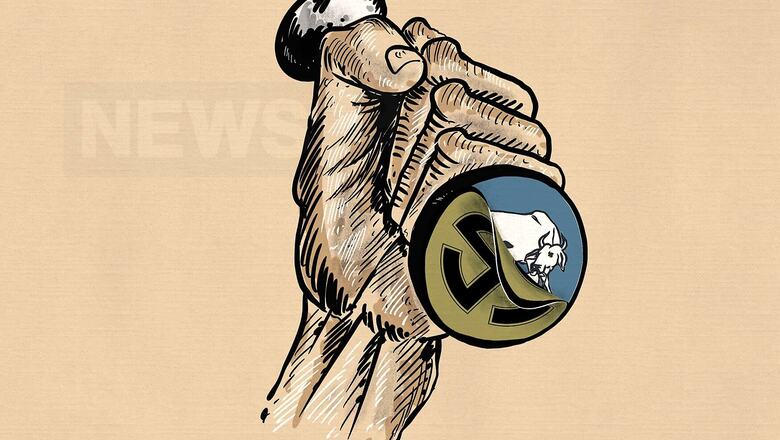
views
The fresh allegation of Electronic Voting Machine (EVM) hacking has reignited the demand from certain political quarters of reverting to the paper ballots. However, if we were to turn back the pages of India?s electoral history, ballot papers were also believed by some to have been ?hacked,? and cases in this context were fought in high courts and also the Supreme Court.
According to the Election Commission of India?s Report on the Fifth General Elections in India 1971-72, on March 20, 1971, Blitz tabloid published from Bombay (now Mumbai) claimed that ballot papers could have been chemically treated to alter electoral results and also described the modus operandi.
According to the theory, a certain percentage of ballot papers in 200 to 250 of the 518 parliamentary constituencies that went to the polls were chemically treated and stamped with invisible ink, which became visible on the ?Calf and Cow? symbol of the Indira Gandhi?s Indian National Congress (R) after 72 hours and the actual stamp put in by voters disappeared.
There were also charges of a Russian connection. It was also claimed that the chemically treated ballot papers were printed in and imported from the Soviet Union.
That the Congress (R) didn?t perform well in West Bengal and Aligarh where counting was held within 72 hours of polling lent some credence to the theory.
The accusations resonated with certain quarters and Bharatiya Jan Sangh?s Balraj Madhok, who lost from South Delhi Lok Sabha constituency, took winning candidate Shashi Bhushan of the Congress to the Supreme Court on grounds that ballot papers had been tampered with. There were other similar appeals made in other courts in the country.
Madhok, in his plea before the Supreme Court, said that ?a large number of ballot papers was different from the colour of the other ballot papers, stamping of the symbols in those ballot papers was uniform, at an identical spot in each of those ballot papers, the stamps were uniform in density and they looked bright and fresh. Those features were quite dissimilar to those found in the other papers including those containing votes in favour of the defeated candidates.?
Some changes in the counting process by the Election Commission of India further fanned the fire. Starting with the 1971 elections, the EC had introduced mixing up of the ballot papers of various booths and rotating them in drums. This, according to the accusers, was done to prevent detection and also so that the chemical treatment of the ballot papers may have the desired effect.
The Election Commission, on its part, took a strong stand and listed out the checks and balances in the electoral system that would have prevented any such meddling.
Labelling the charges as an ?absurd and fantastic? story, the Election Commission said that it was noteworthy that the all ?allegations and canards were made only after the declaration of the results of the elections when the clear picture of the party positions emerged”.
“No objection as to chemically treated ballot papers or the use of invisible ink etc. was made by anybody either openly or whisperingly in any part of India before the declaration of the results,? it said.
The Commission also highlighted the security processes and said it was not possible that such malpractice involving 200-250 constituencies could have taken place without someone noticing and reporting it.
The allegations also did not stand judicial scrutiny and the cases were dismissed by the courts. And in the words of the Commission in its report on the 1971 elections, this story ?has now found its right and proper place in the dustbin of history.?


















Comments
0 comment